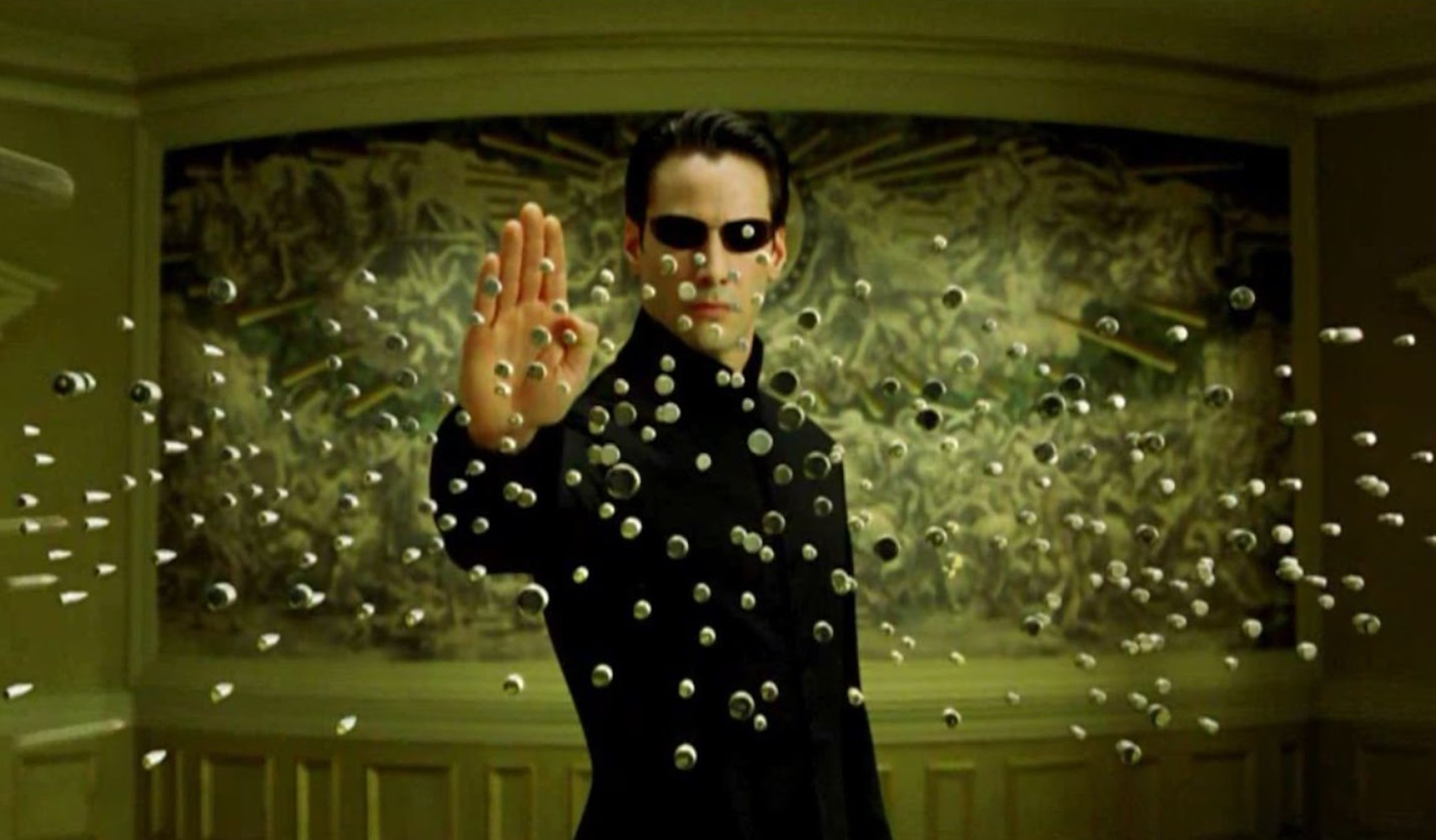Upon its 1999 debut, ‘The Matrix’ captivated both viewers and reviewers, offering a film experience that revolutionized action cinema. Under the direction of Lana and Lilly Wachowski, ‘The Matrix’ went beyond simple entertainment; it reshaped visual narratives, technical benchmarks, and intellectual profundity within the action category. A review of its impact demonstrates how this unique endeavor initiated a fundamental change, motivating directors globally, altering what audiences anticipated, and establishing itself as a foundational touchstone for future eras.
A Fresh Approach to Visual Effects
At the core of ‘The Matrix‘ revolution was its pioneering method for visual effects, specifically the innovation known as bullet time. This method created the illusion of a scene where events unfold in an otherworldly slow motion, while the camera appears to orbit the subject at a regular pace. Accomplished by merging high-speed filming, cameras controlled by motion, and advanced digital compositing, bullet time offered viewers viewpoints that were previously inconceivable. The memorable moment where Neo, portrayed by Keanu Reeves, evades incoming bullets with a graceful curve, became a landmark in cinema. Directors throughout Hollywood and elsewhere quickly aimed to replicate and modify this effect, from ‘Charlie’s Angels’ to video games such as ‘Max Payne,’ thereby embedding the technology and its visual style into public awareness.
Choreographic Innovation and Martial Arts Fusion
Prior to ‘The Matrix,’ Hollywood action choreography generally favored brute strength or straightforward shootouts. The Wachowskis, however, brought in legendary Hong Kong fight choreographer Yuen Woo-ping to train the cast in wire-fu and martial arts techniques. This east-meets-west fusion produced balletic, gravity-defying combat never before seen in Western action films. Characters fought with a precision and fluidity reminiscent of wuxia cinema, yet these sequences were contextualized within a cyberpunk, American narrative structure. This collaboration catalyzed a trend: Western productions increasingly looked to Asian choreographers and techniques, as seen in franchises like ‘Kill Bill,’ ‘Crouching Tiger, Hidden Dragon,’ and ‘John Wick,’ graduating the genre beyond simple physical brawls to elaborately constructed ballets of violence.
Philosophy and Mythology: An Intellectual Aspect
‘The Matrix’ distinguished itself not only through its visual spectacle but also by blending action with profound philosophical and existential inquiries. The storyline prompted viewers to ponder concepts of reality, individual autonomy, and selfhood, drawing influence from philosophers such as Jean Baudrillard and themes from mythology and religious traditions. The widely referenced red pill/blue pill choice serves as a concise representation of the movie’s deep existential implications. By integrating complex metaphysical ideas into its intense action scenes, ‘The Matrix’ motivated other directors to incorporate intellectual depth and thematic richness into genre films, thereby setting a precedent for more ambitious narratives in movies like ‘Inception’ and ‘Blade Runner 2049.’
Technological Integration and World-Building
A noteworthy innovation was the film’s seamless integration of digital technology into both its narrative and production design. ‘The Matrix’ depicted a world where the boundaries between human experience and digital construct were fluid, anticipating conversations about virtual reality and simulation theory. Visual motifs such as the cascading green code and stark architectural minimalism became not only iconic but also reflective of the film’s underlying themes about perception and control. In this way, action was not merely spectacle, but inherently tied to the film’s world-building and emotional stakes. Many subsequent films and series, from ‘Minority Report’ to ‘Westworld,’ have adopted this model, intertwining technology and action to deepen storytelling.
Sound, Editing, and Aesthetic Cohesion
The impact of ‘The Matrix’ also extends into its auditory landscape and editing style. The film’s sound design, characterized by high-pass filtered gunshots, digitally manipulated punches, and the inventive use of silence, amplified tension and realism. Composer Don Davis’s score merged electronic music with orchestral bravado, marking a departure from more traditional action soundtracks. The use of rapid-fire editing—coherently choreographing spatial geography even in complex scenes—set a standard for clarity amidst chaos. This meticulous crafting ensured that visual spectacle did not blur narrative comprehension, an issue that plagued many earlier action sequences.
Empowering Narrative Diversity and Inclusive Casting
A further aspect of ‘The Matrix’s’ enduring impact is its forward-thinking stance on character identity. Although not explicitly stated initially, later examinations and discussions have emphasized motifs of metamorphosis, selection, and defiance that connect with underrepresented identities, such as trans stories—mirroring the personal journeys of the Wachowskis. The movie’s varied cast, notably Laurence Fishburne portraying Morpheus, pioneered more comprehensive portrayal in genre movies, expanding the emotional and audience appeal of action pictures.
Box Office Legacy and Industry Impact
The triumph of ‘The Matrix’ extended beyond its artistic merit to significant commercial achievement. Earning more than $460 million globally on a $63 million expenditure, it showcased a strong demand for groundbreaking action films. The immediate reaction from the industry involved a rise in high-concept, effects-heavy blockbusters, greater financial commitment to digital post-production, and a newfound openness to backing auteur-led ventures with profound philosophical themes. Leading studios expedited the investigation and implementation of green screen technology, motion capture, and digital compositing, quickly enhancing the resources available for this film category.
Lasting Impact and Societal Significance
Twenty years following its debut, the influence of ‘The Matrix’ is clearly evident in modern action films. Expressions such as “I know kung fu” and “the Matrix” itself have become common terms to describe profound, transformative experiences. This movie sparked extensive academic studies, fan interpretations, and numerous artistic tributes, ensuring its enduring cultural relevance across various platforms and age groups.
Year after year, ‘The Matrix’ continues to serve as a blueprint and a benchmark for action films. Its legacy is evident in how creators now approach choreography, thematic depth, technological integration, and narrative inclusivity. It challenged conventions, broadened horizons for what action films could communicate, and left an indelible imprint on both the craft and philosophy of cinematic storytelling.

